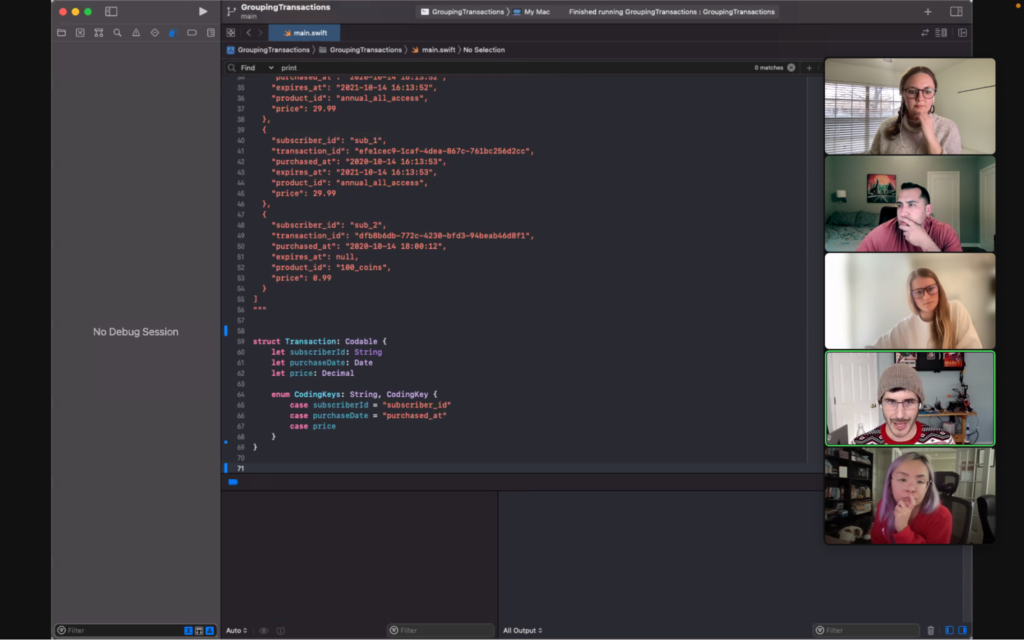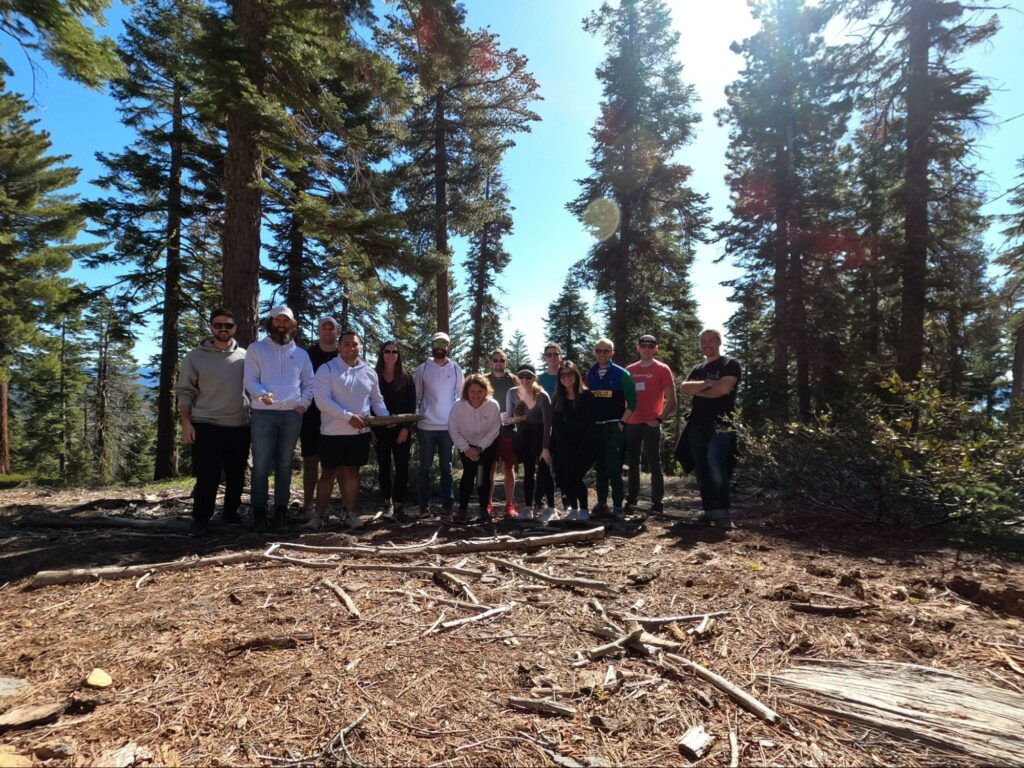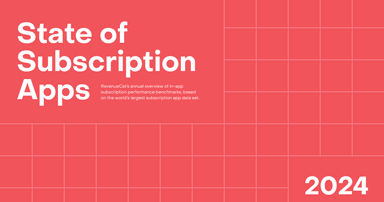How We Work Remotely at RevenueCat
We're a little different than your average 9-5 job


Rachel Wright
One of the most common questions we get from candidates interested in working at RevenueCat is what our remote work culture is like. Our team is spread out across the globe, so our processes look a little different than the average 9 to 5.
While we’re obviously not the only company working 100% remotely, RevenueCat was built as a remote-first company from the start. Over the years, we’ve put a lot of thought into how to set up our distributed team for success.
Proactive, not reactive
When the COVID-19 pandemic forced companies to go remote in 2020, a lot of organizations shifted to remote work reactively — taking the same in-office culture and just doing it from home. For many employees, this meant a more stressful work day than before, as they tried to balance their home life and work life without any formal support.
With the return to offices and the shift toward a hybrid work model, many companies have unintentionally created a disjointed culture with what feels like two distinct classes of team members: in-person and remote.
For RevenueCat, remote work was a proactive choice we made early on.
RevenueCat was founded in 2017. The first few employees were located in California, but our co-founders Jacob and Miguel built the company culture and ethos with a specific focus on remote work. We now have team members in 9 different countries and are constantly thinking about how to make our processes and communication work for our global team.
Because our entire team is fully remote (and always has been), no one is left out of the loop. Tony Cosentini, who joined RevenueCat from Taiwan in 2019 shared, “This was my first time working fully remote. I think one big benefit is that everyone is remote at RevenueCat so things are generally async from the start and remote folks aren’t treated any differently. I don’t think I’ll ever go back to working at a traditional office again.”
Deema AlShamaa (one of our newest engineers) agrees. “Because we’re remote-only, I get the benefits of remote work without worrying I’m missing some conversation that’s happening at HQ. All those conversations happen in Slack/Zoom!”

The benefits of asynchronous work
Most companies work synchronously, scheduling lots of live video calls and expecting responses to their DMs within minutes. Workplace chat apps like Slack have pushed synchronous work even further to the forefront, but we’ve made the conscious decision to practice asynchronous communication as much as possible. There are a few reasons for this:
Time zones
Our team is distributed across multiple time zones around the world. Many of those time zones don’t overlap for much of the work day (if they overlap at all), so real-time conversations aren’t always feasible. Asking team members in Asia to be available for Zoom meetings on Bay Area time would interfere with their life outside of work.
Deep work
Creative work takes time and focus. If you’re constantly getting pulled into Zoom meetings and Slack threads, you’re switching contexts all day long — which wrecks your focus and keeps you from getting into a flow state. Jacob and Miguel block off time on their calendar every day for deep work, which not only allows them to tackle tasks that require more focus and creativity but also sets the expectation that team members can and should protect their own time.
One way we communicate asynchronously is through documentation. We write our internal documentation in Notion, and we constantly update it so the information is accurate and complete. Team members in every department have access to our internal docs, so everyone can find the information they need whenever they need it. (No Zoom meetings or Slack pings required.)

Collaboration
In addition to helping us work together across time zones, asynchronous work also makes collaboration more inclusive. Some folks aren’t great at on-the-spot brainstorming, a team member with a stutter may get nervous in a live call, non-native English speakers may prefer to communicate in writing, and some people are just shy and struggle to speak up in meetings. All of these people benefit from asynchronous work, where they are empowered to contribute in the ways that work best for them.
Work/life balance
Everyone on our team has a different life. Whether it’s being a parent, walking their dog, attending your kid’s volleyball tournament, or taking a midday nap, one team member’s ideal work schedule looks different. Jens-Fabian Goetzmann, our Head of Product, is a dad, and working at RevenueCat lets him work during the hours that make the most sense for him.
“Our flexible schedule gives me the opportunity to spend the afternoons with my kids and work some more at night when they’re asleep. Plus, working asynchronously means that I have fewer meetings than I had in any previous job, and more time for deep thought.”
One of our engineers goes on midday bike rides, another takes midday walks, and our recruiting manager does afternoon CrossFit. As an early-stage startup with big goals, our team has plenty to work on. Asynchronous and remote work gives us more space to tackle that work in ways that align with our individual lives and schedules.
Connection
One of the things we think about a lot is how to help our team feel like a team. Even though we don’t work face to face, it’s still important for everyone on our team to feel connected.
Starting a new job can be a little intimidating, so we do our best to make sure new team members feel supported and welcome from day one. We celebrate all of our new hires with a spotlight in our company all-hands meeting and break the ice so they can get to know their new coworkers.
We schedule bi-weekly casual “water cooler” chats to help us connect as people, not just coworkers. We also provide a stipend for team members to meet up in person. We’ve had team members meet up in Austin, Madrid, Amsterdam, and San Diego! We also have an annual offsite for the entire team to get together and spend time together in person to help forge those connections even more.
Plus, we have tons of fun Slack channels dedicated to non-work topics to keep things light and help us learn more about each other. From books to movies to kids and pets, we’re always chatting about the little things that bring us joy!

Values
Ultimately, the way we work influences how we live our lives. At RevenueCat, we feel that our workday should support our ability to live the rest of our lives — not impede it.
Our remote-first culture lets us support our team in the ways that work best for them.
Want to work remotely at RevenueCat? Check out our open roles!
In-App Subscriptions Made Easy
See why thousands of the world's tops apps use RevenueCat to power in-app purchases, analyze subscription data, and grow revenue on iOS, Android, and the web.



